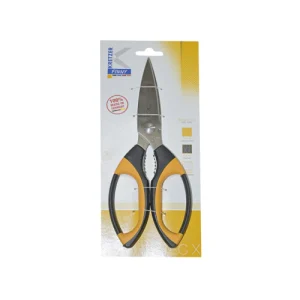Aluminum roller with grooves in length and width is an important and specialized tool for the production of fiberglass parts. These types of rollers have vertical and horizontal grooves (in length and width) on their surface, which have special applications in the process of manufacturing fiberglass parts. Using this tool in the Hand Lay-Up process and other methods of manufacturing fiberglass parts is very useful in order to improve the final quality and increase production efficiency.
Application of aluminum roller with grooves in length and width in the manufacture of fiberglass parts:
- More effective removal of air bubbles:
- One of the biggest problems in the production of composite parts such as fiberglass is the trapping of air bubbles between the layers. Due to their special design, the rollers with grooves in length and width control the movement of the material in two directions better and cause faster and better exit of air bubbles from between the resin and fiberglass layers.
- Better compression of fiberglass layers:
- The grooves in length and width help to apply more pressure evenly in two directions to the fiberglass layers, which causes higher density and better compression of the material. This feature creates high-quality parts without defects.
- Uniform distribution of resin in two directions:
- The cross grooves (in length and width) cause uniform distribution of resin on all surfaces of the fiberglass. This uniform distribution helps prevent dry spots or spots with too much resin, which results in parts with greater mechanical strength and better final quality.
- Use in large and complex parts:
- Grooved rollers in length and width are very useful for large or complex shaped parts due to their multi-directional design. Because these types of rollers can move in two directions on the materials simultaneously and work evenly on their surface.
Benefits of using an aluminum roller with grooves in length and width:
- Increase the strength of the parts:
- With better air removal and resin distribution, the final fiberglass parts become stronger and have higher resistance to cracking or breakage.
- Reduce the weight of the part:
- Using this type of roller prevents excess resin from remaining in the parts, and this can lead to a reduction in the final weight of the part without reducing quality and strength.
- High roller resistance:
- Aluminum is very suitable for manufacturing industrial rollers due to its high corrosion resistance and light weight. These features make grooved rollers long-lasting and easy to use and clean.
- Use in various environments:
- Due to its heat resistance and lightness, aluminum rollers can be used in various environmental conditions (such as high temperatures or humid environments) without changing their quality or performance.
Groove Design:
The grooves of these rollers are designed in a crosswise manner (in length and width), which allows resin and excess material to be controlled in two directions. This design makes the production process more efficient and prevents the formation of bubbles and weak spots in the part. The longitudinal and transverse grooves also play a role in controlling the movement of the material on the roller surface and better compaction.
Conclusion:
Aluminum roller with longitudinal and transverse grooves, as one of the vital tools in the production of fiberglass parts, plays a very important role in improving the final quality and accelerating the manufacturing process. This tool helps to produce parts with high strength and excellent surface quality by removing air bubbles, distributing resin evenly and compressing the layers better.






Your comments
Comments
There are no reviews yet.